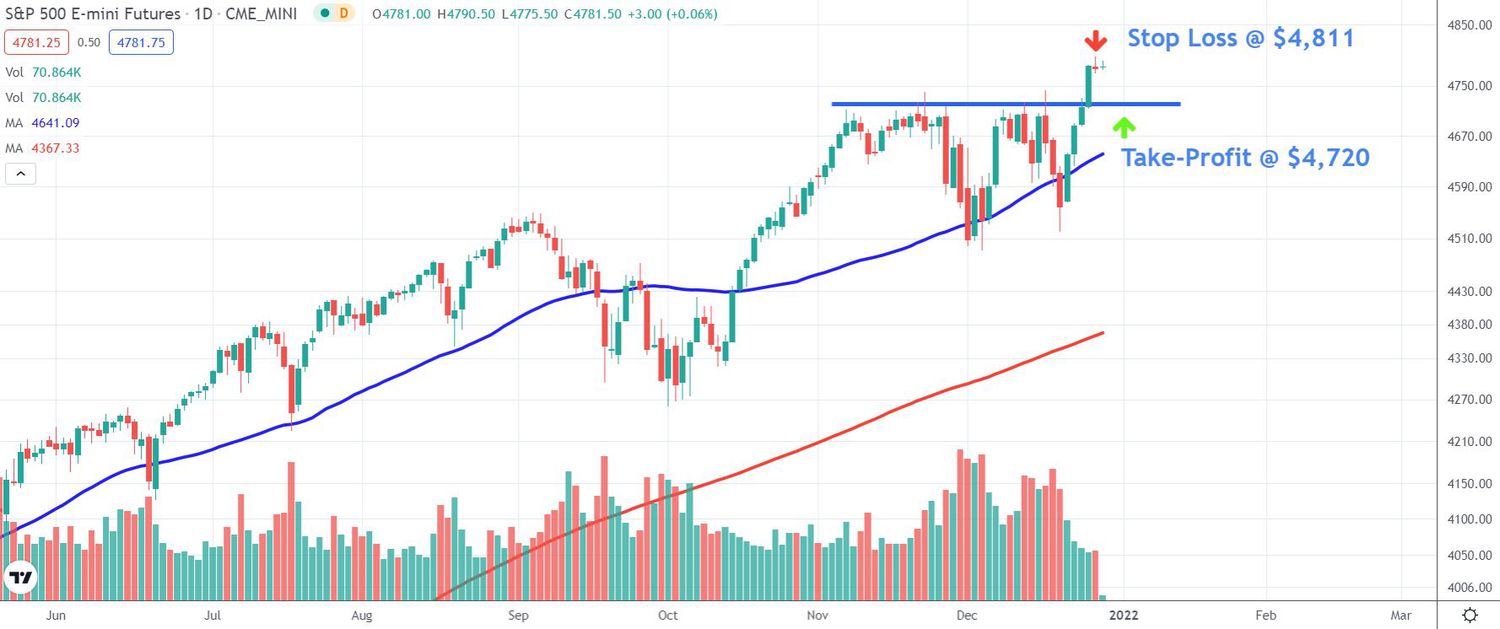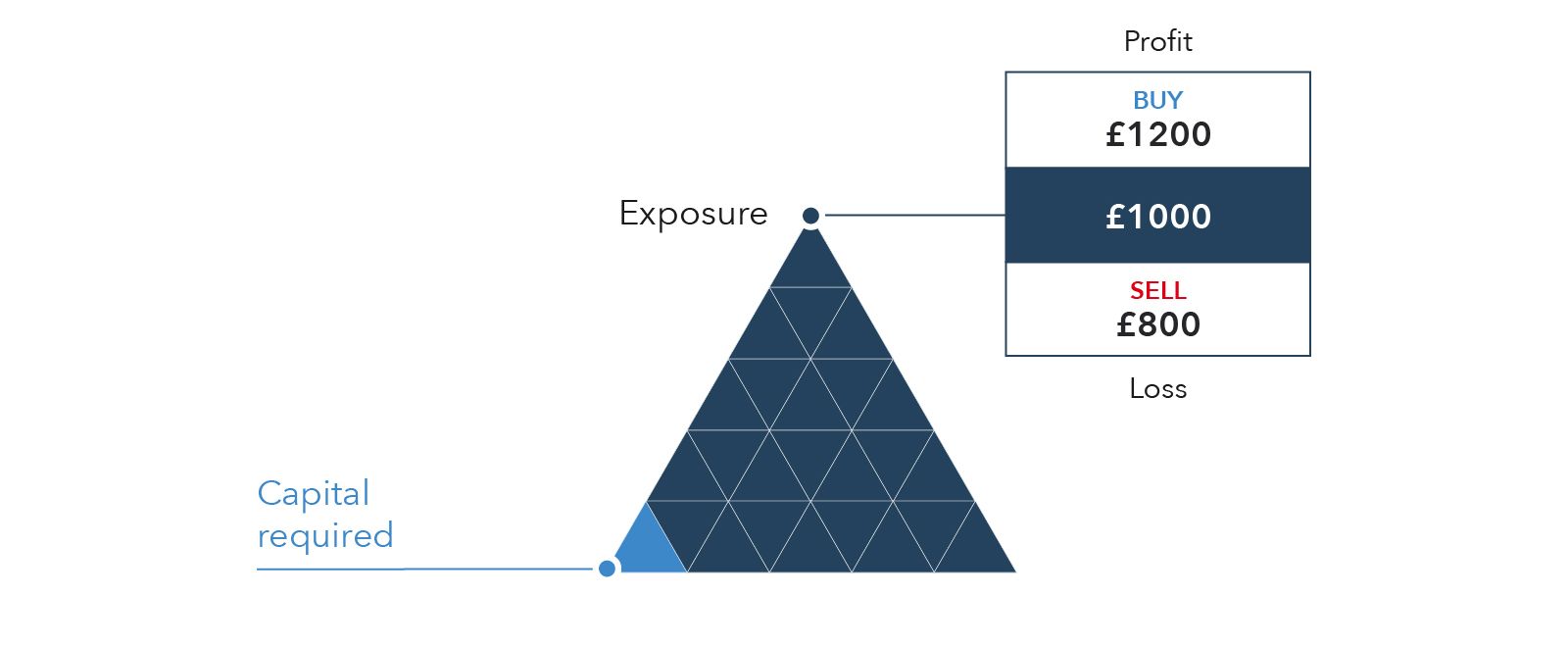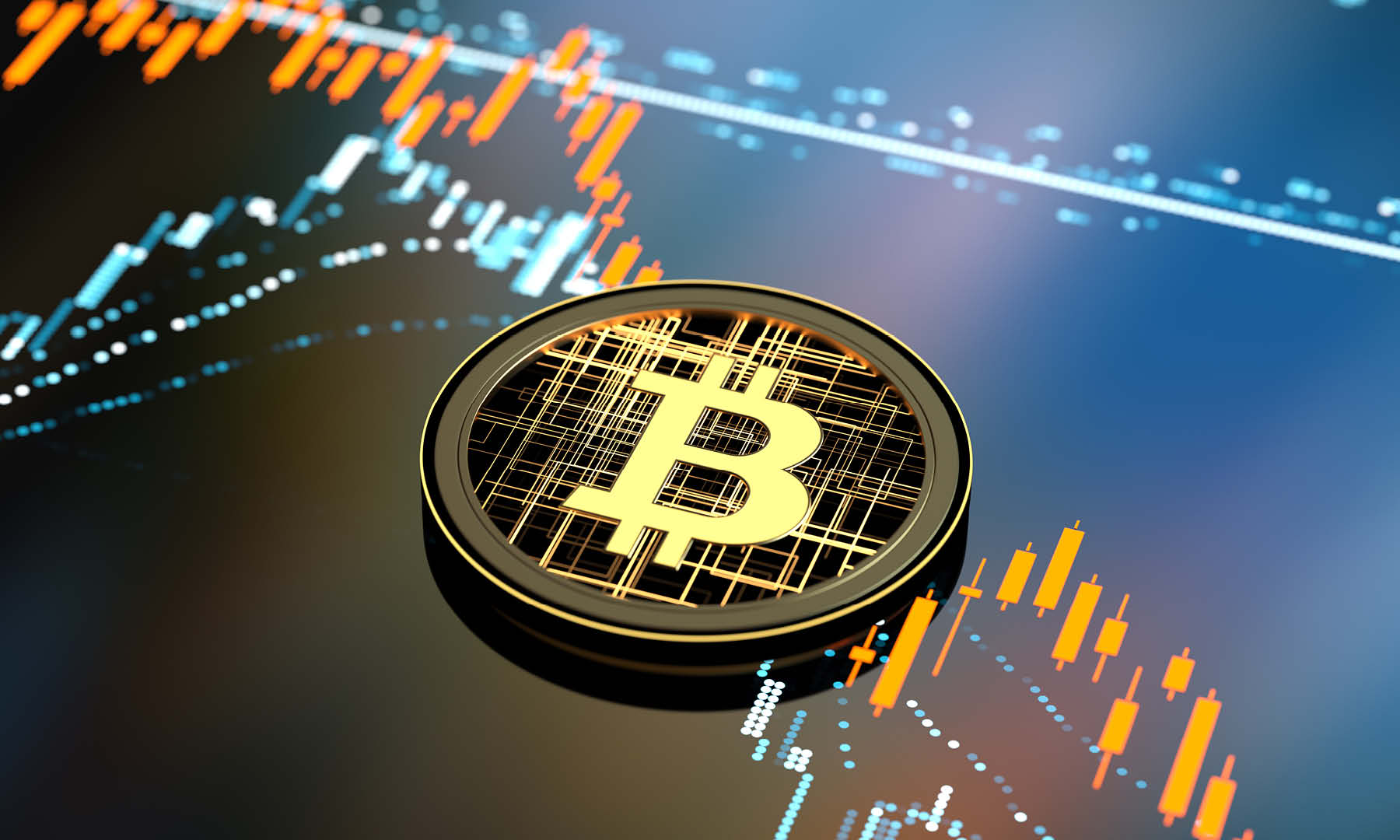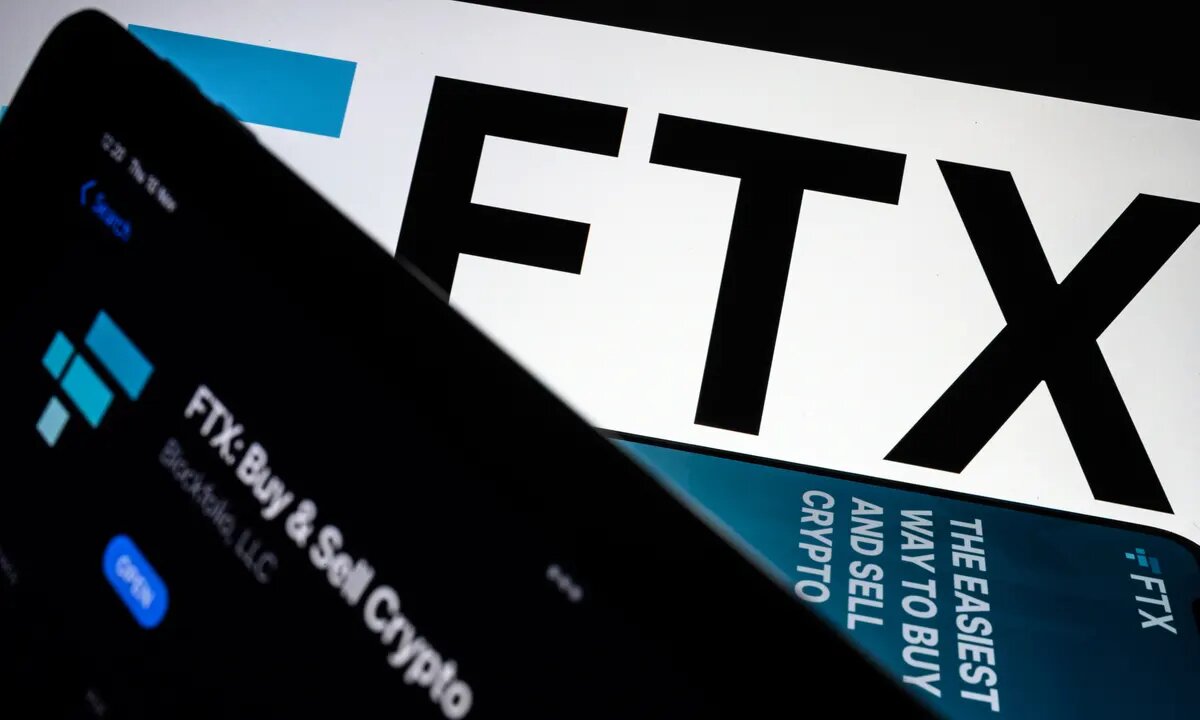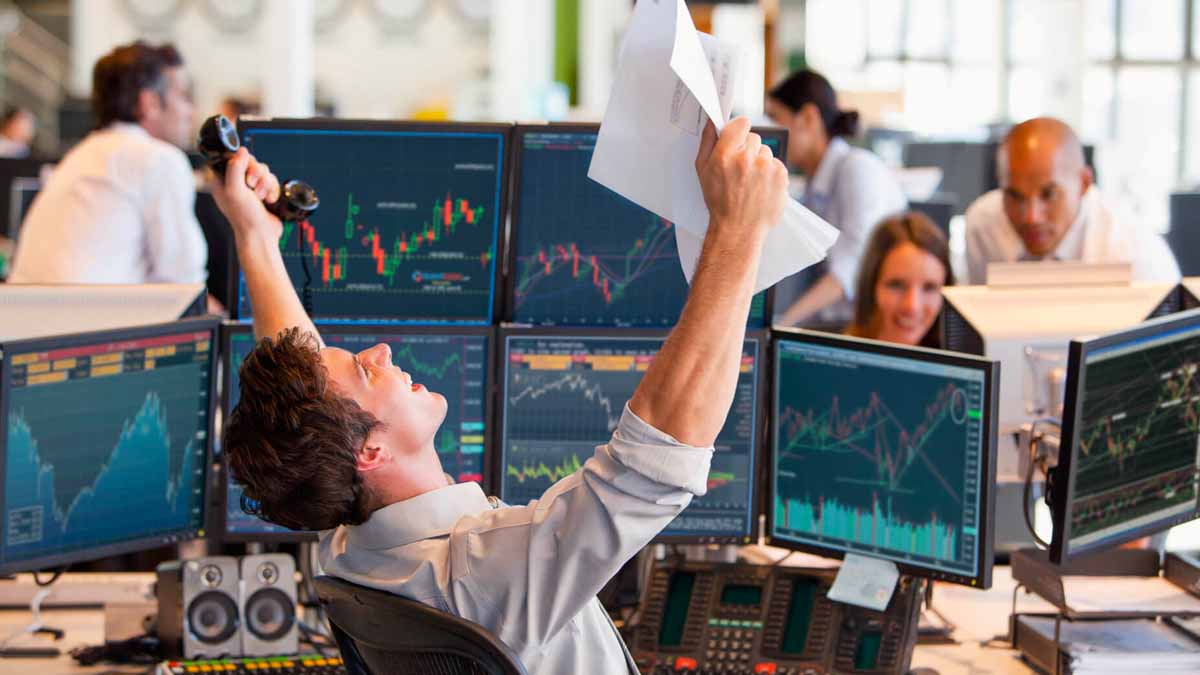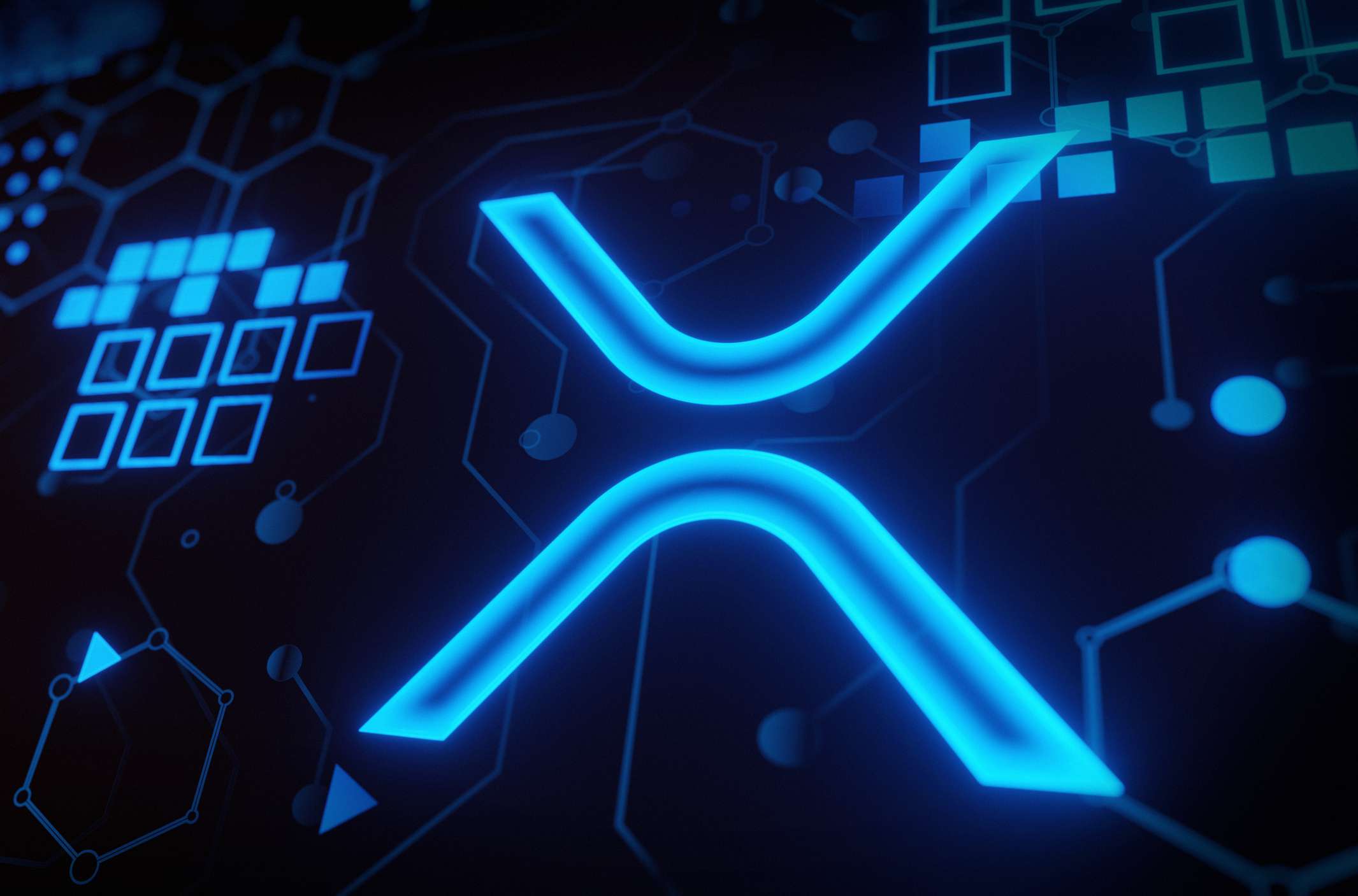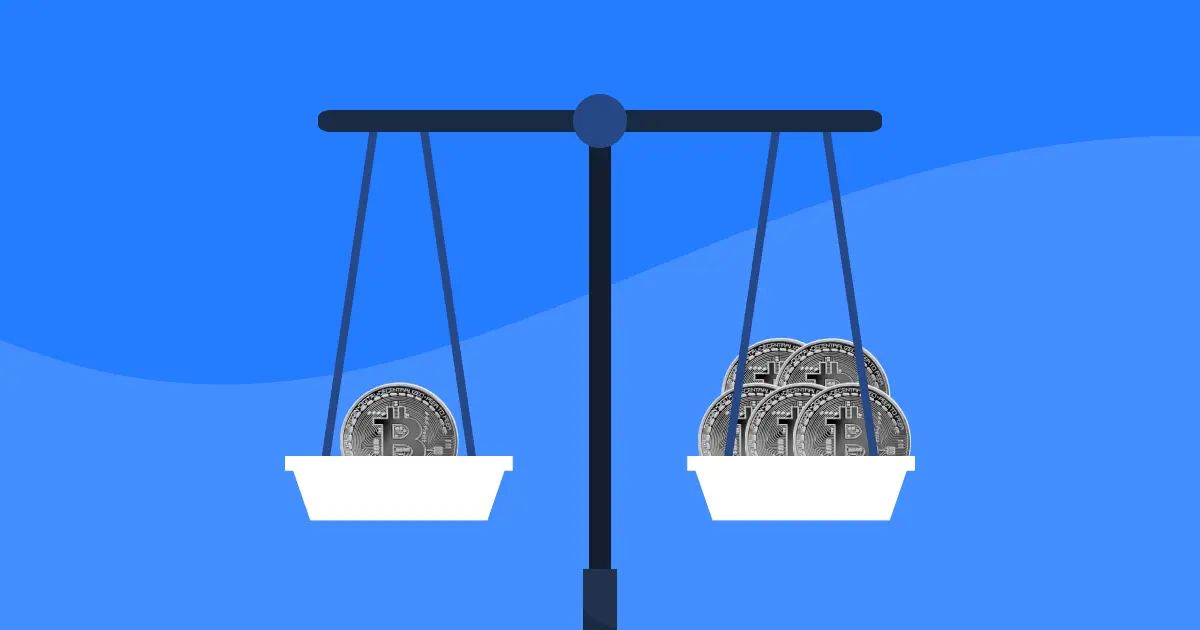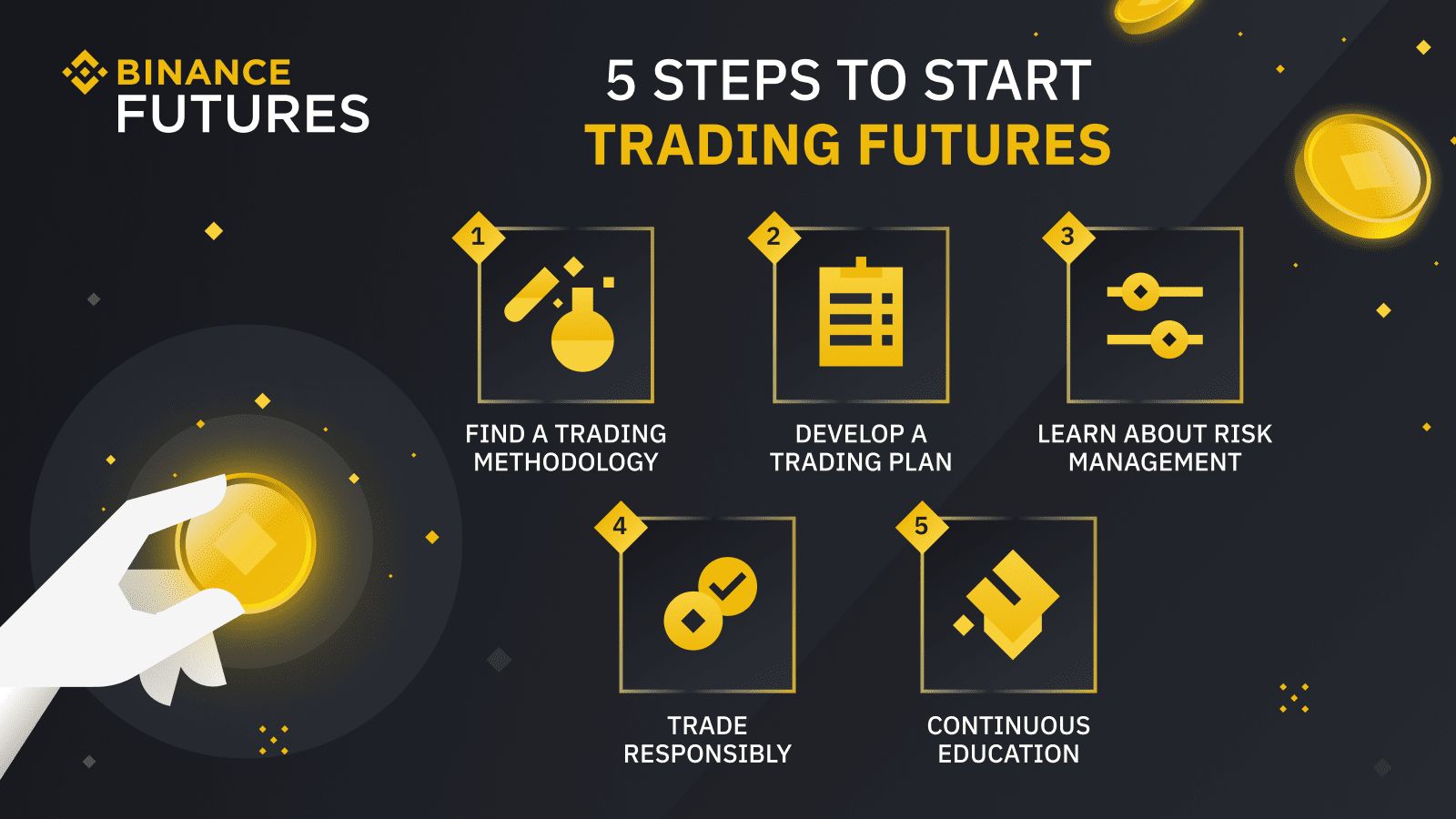Introduction
Welcome to the fascinating world of futures trading! If you’re new to the concept of futures contracts and wondering when they start trading, you’ve come to the right place. In this article, we’ll delve into the intricacies of futures trading and explore the factors that influence the start dates of these contracts.
But first, let’s quickly recap what futures contracts are. In simple terms, futures contracts are legal agreements between two parties to buy or sell a specific asset, such as commodities, currencies, or financial instruments, at a predetermined price and date in the future. These contracts serve as a means for investors and traders to speculate on the price movements of various assets.
The futures market is a dynamic and highly regulated marketplace where these contracts are bought and sold. It plays a crucial role in global financial systems, enabling participants to hedge against price fluctuations, discover fair market prices, and even profit from market trends.
Now, the burning question: When do futures contracts actually start trading? While the answer may seem straightforward, it varies depending on various factors, including the type of contract, market demand, and the policies of individual exchanges.
Understanding the factors that influence the start dates of futures trading is essential for anyone looking to participate in this exciting market. In the following sections, we’ll explore these factors in more detail and provide insights on how to find out when a specific futures contract starts trading.
So, let’s dive in and unravel the mysteries behind when futures contracts begin trading!
What are futures?
Before we dive into the details of when futures contracts start trading, let’s take a moment to understand what exactly futures contracts are. In simple terms, futures contracts are financial agreements that obligate parties to buy or sell a particular asset at a predetermined price and date in the future.
These contracts, which are standardized and regulated, are primarily used in the commodities market but have expanded to include other assets like currencies, stocks, and indices. They serve as a tool for hedging against price volatility, speculating on future price movements, and enabling price discovery for various assets.
To illustrate how futures contracts work, let’s consider an example involving wheat. Suppose a wheat farmer expects the price of wheat to fall in the coming months due to increased supply. To protect themselves from potential losses, the farmer can enter into a futures contract to sell a specified amount of wheat at a predetermined price in the future.
On the other side of the contract, a buyer, such as a bakery, may anticipate an increase in wheat prices and wants to secure their supply at a favorable price. By entering into a futures contract to buy wheat, the bakery can ensure a fixed price for the wheat it will need in the future.
One of the key features of futures contracts is that they are standardized, meaning they have specified contract sizes, expiration dates, and delivery terms. This standardization ensures transparency and liquidity in the market, allowing participants to easily buy or sell these contracts.
It’s important to note that most futures contracts are not intended for physical delivery but rather for cash settlement. This means that rather than physically exchanging the underlying asset at the contract’s expiration, the difference in price between the contract’s initial value and the settlement price is settled in cash.
Futures contracts also play a crucial role in price discovery and market efficiency. As traders and investors buy and sell these contracts, the prices they transact at reflect market expectations and consensus on future asset prices. This information is valuable for market participants seeking insights into future price trends.
In summary, futures contracts are financial agreements that enable parties to buy or sell assets at a predetermined price and date in the future. They provide a means for hedging, speculating, and price discovery. Understanding the fundamentals of futures contracts is essential for navigating the world of futures trading.
Understanding the futures market
To fully grasp the concept of when futures contracts start trading, it’s crucial to gain a deeper understanding of the futures market itself. The futures market is a dynamic and highly regulated marketplace where buyers and sellers trade futures contracts.
One of the defining characteristics of the futures market is its role in facilitating price discovery. Essentially, as buyers and sellers interact in the market, the prices at which they trade reflect the market’s consensus on the future value of underlying assets. This helps participants gain insights into market trends and make informed decisions.
Another important aspect of the futures market is the concept of leverage. When trading futures contracts, participants are required to deposit a relatively small portion of the contract’s total value as margin. This allows traders and investors to control a more significant position in the market than their available capital would otherwise allow. However, it’s important to note that leverage can amplify both profits and losses, making risk management crucial in futures trading.
The futures market operates through exchanges, which are regulated platforms that provide a centralized marketplace for trading futures contracts. These exchanges play a vital role in determining when specific futures contracts start trading. They set the standards for contract specifications, trading hours, and other rules that govern trading activity.
Market participants can access futures markets through two primary types of participants: hedgers and speculators. Hedgers are individuals or businesses that have exposure to price fluctuations in an underlying asset and use futures contracts to manage and mitigate this risk. For example, a farmer growing corn may use futures contracts to protect against the risk of falling corn prices.
On the other hand, speculators are traders who aim to profit from price movements in futures contracts without intending to take physical delivery of the underlying asset. These speculators provide liquidity to the market by taking the opposite side of hedgers’ trades and seeking to profit from buying low and selling high or vice versa.
Overall, the futures market serves as a vital component of the global financial system. It facilitates efficient price discovery, enables risk management for hedgers, and offers opportunities for traders and speculators to participate in the market and potentially profit from price movements.
Now that we have a better understanding of the futures market, let’s explore the factors that influence when futures contracts start trading.
When do futures contracts start trading?
When it comes to the exact timing of when futures contracts start trading, it can vary depending on several factors. These factors include the type of futures contract, market demand, and the rules and regulations set by the exchanges where the contracts are traded. Typically, futures contracts have specified contract months and trading periods that dictate when they become available for trading.
Contract months refer to specific months in which the futures contract is available for trading. Futures contracts often have multiple contract months, allowing traders and investors to choose the contract that aligns with their desired trading or investment timeframe. For example, a crude oil futures contract might have contract months available for trading over the next few months or even years.
Trading periods, on the other hand, define the specific dates and times within a contract month when trading is open. The trading periods can vary depending on the asset being traded and the exchange’s operating hours. For example, agricultural futures contracts may have trading hours that align with the regular trading hours of the underlying cash market, while financial futures contracts might have extended trading hours to accommodate global market participants.
It’s important to note that not all futures contracts have the same start and end dates. Some contracts, known as “near-term” contracts, start trading well in advance of the contract month, allowing participants to enter and exit positions ahead of the contract’s expiration. Other contracts, referred to as “deferred” contracts, may start trading closer to the beginning of the contract month.
The start of futures trading in a contract month is typically driven by market demand. Exchanges aim to create a balance between providing enough time for participants to trade the contracts and ensuring sufficient liquidity in the market. The specific start date is determined by the exchange’s rules and regulations, taking into consideration factors such as market stability, fair price discovery, and efficient order execution.
Additionally, certain events or economic indicators can influence the start of futures trading. For example, in the case of agricultural commodities, the planting and harvesting seasons may affect the timing of when futures contracts begin trading for specific crops. Economic reports or key announcements that impact the underlying asset’s market can also prompt exchanges to adjust the start of trading.
To find out when a particular futures contract starts trading, traders and investors can refer to the calendar provided by the exchange where the contract is listed. The exchange’s website or trading platforms usually display the contract months and their corresponding start dates, allowing participants to plan their trading strategies accordingly.
Understanding when futures contracts start trading is vital for market participants as it allows them to actively participate in the market, take advantage of trading opportunities, and manage their risk effectively. By staying informed about the start dates of futures contracts, traders and investors can make timely and strategic decisions in their trading activities.
Factors that influence the start of futures trading
Several factors come into play when determining the start of futures trading for a specific contract. These factors include market demand, regulatory requirements, market stability, and the nature of the underlying asset. Let’s explore each of these factors in more detail.
Market demand plays a significant role in determining when futures contracts start trading. Exchanges need to ensure there is sufficient interest and liquidity in a contract before allowing trading to commence. If there is low demand or inadequate participation, the exchange may delay or even cancel the launch of the contract to avoid illiquid markets.
Regulatory requirements are another critical factor. Exchanges must adhere to the rules and regulations set by regulatory authorities governing futures trading. These requirements may include approval processes, ensuring fair trading practices, and protecting the interests of market participants. The exchange needs to fulfill these requirements before initiating the trading of a futures contract.
Market stability is essential for the smooth functioning of futures trading. Exchanges closely monitor market conditions and may postpone or reschedule the start of trading if there are significant disruptions, such as extreme price volatility or economic events that could impact the asset’s market. Ensuring market stability is crucial for maintaining fair and orderly trading environments.
The nature of the underlying asset can also influence when futures contracts start trading. Different asset classes have unique characteristics and market dynamics that must be considered. For example, agricultural commodities may have specific planting and harvesting seasons, leading to certain contract months being more suitable for trading. Financial instruments like stock indices may need to align with the trading hours of the underlying cash markets.
Additionally, exchanges may consider the feedback received from market participants and industry stakeholders. The exchange may conduct consultations or seek input on proposed contract specifications and trading periods to ensure they meet the needs and preferences of the market. Collaborative decision-making can help align the start of futures trading with market expectations.
It’s worth noting that exchanges strive to strike a balance between providing timely access to futures contracts and maintaining market efficiency and stability. They aim to facilitate fair price discovery and offer participants ample opportunities to trade without compromising the overall integrity of the market.
By considering these various factors, exchanges can determine an appropriate start date for futures trading. Market demand, regulatory requirements, market stability, and considerations specific to the underlying asset are all essential factors in this process. Understanding these influences helps market participants stay informed and anticipate the timing of when futures contracts become available for trading.
The role of exchanges in determining start dates
Exchanges play a crucial role in determining the start dates of futures contracts. These financial marketplaces have the responsibility of setting and enforcing rules and regulations that govern the trading of futures contracts. Let’s explore the key aspects of the exchange’s role in determining start dates.
One of the primary responsibilities of exchanges is to establish contract specifications, which include details such as contract size, expiration months, and trading periods. These specifications are designed to create standardized contracts that provide transparency, liquidity, and facilitate fair trading practices. By setting contract specifications, exchanges determine the structure and timing of when futures contracts start trading.
Exchanges also consider market demand when determining start dates. They assess the level of interest and participation from market participants to ensure there is sufficient liquidity in the market. If there is low demand or inadequate interest, the exchange may delay the start of trading to avoid illiquid markets. Conversely, if there is significant market demand, exchanges may introduce futures contracts sooner to meet the needs of traders and investors.
Market stability is another crucial factor considered by exchanges. Before allowing the trading of a futures contract to commence, exchanges carefully assess market conditions to ensure stability. They analyze factors such as price volatility, economic events, and global market trends that could impact the underlying asset. If market instability is detected, exchanges may postpone the start of trading to maintain a fair and orderly trading environment.
Regulatory compliance is a fundamental aspect of an exchange’s role in determining start dates. Exchanges must abide by the rules and regulations set by regulatory authorities governing the trading of futures contracts. They are responsible for fulfilling the necessary requirements, such as obtaining regulatory approvals and following trading and reporting standards. Compliance with regulations ensures the integrity and transparency of the futures market.
Exchanges also play an active role in seeking feedback and input from market participants and industry stakeholders. This collaborative approach helps the exchange gather valuable insights, suggestions, and concerns related to potential changes to contract specifications or trading periods. By involving market participants in decision-making processes, exchanges ensure that the start dates of futures contracts align with market expectations.
It’s important to note that the role of exchanges goes beyond determining start dates. Exchanges also act as the central marketplace where buyers and sellers interact, facilitating the execution of trades and ensuring fair price discovery. They provide trading platforms, surveillance systems, and clearing services, ensuring the efficient and smooth operation of futures trading.
In summary, exchanges have a vital role in determining the start dates of futures contracts. They establish contract specifications, consider market demand and stability, comply with regulatory requirements, and seek input from market participants. By fulfilling these responsibilities, exchanges contribute to the overall functioning and integrity of the futures market.
Different start dates for different futures contracts
Not all futures contracts have the same start dates. The start dates can vary based on the specific contract being traded and the underlying asset. This variation is driven by factors such as market demand, liquidity considerations, and the nature of the asset being traded. Let’s explore why different futures contracts have different start dates.
One of the primary reasons for different start dates is the unique characteristics of the underlying asset. Different commodities, financial instruments, or currencies may have specific considerations that impact the timing of when futures contracts start trading. For example, agricultural commodities are often influenced by planting and harvesting seasons, resulting in futures contracts beginning trading at specific times fitting these cycles.
Liquidity is another crucial factor. Exchanges aim to ensure sufficient liquidity in the market when introducing futures contracts. Highly liquid assets with substantial trading volume are typically available for trading over a more extended period before the contract’s expiration. This allows market participants to enter and exit positions as needed, contributing to a liquid and efficient market.
Market demand is an influential factor in determining start dates. Exchanges assess the level of interest from traders and investors when deciding when to introduce a new futures contract. If there is significant demand for a particular contract, the exchange may launch it sooner to meet market needs. Conversely, if there is limited demand, the exchange may delay or even cancel the launch to prevent market inefficiencies.
The rules and regulations set by exchanges also contribute to different start dates. Exchanges establish specific criteria for new contracts, such as minimum open interest requirements or approval processes. These rules ensure that the contract meets certain standards and that there is adequate market participation before trading begins. Compliance with regulatory requirements can impact the timing of when a futures contract starts trading.
Furthermore, the maturity or expiration date of the futures contract can influence its start date. Contracts with longer maturity dates may start trading earlier, allowing market participants to establish positions and manage risk over an extended period. Shorter-term contracts may have a more immediate start date to address the needs of traders seeking shorter-term trading opportunities.
It’s important for traders and investors to understand that different start dates for futures contracts are normal and reflect the unique characteristics and demands of the underlying assets. By being aware of the specific start dates and considering the factors that influence them, market participants can develop informed trading strategies and effectively navigate the futures market.
How to find out when a futures contract starts trading
Knowing when a specific futures contract starts trading is crucial for traders and investors looking to participate in the market. Fortunately, there are several ways to find out the start date of a futures contract. Here are some effective methods:
1. Exchange websites: The exchange where the futures contract is listed is the primary source for obtaining information about start dates. Most exchanges have dedicated websites that provide comprehensive and up-to-date information about various futures contracts, including their start dates. Visit the exchange’s website and navigate to the section related to futures contracts to find the details.
2. Trading platforms: Many online trading platforms provide access to futures markets and display contract specifications, including start dates. These platforms often offer user-friendly interfaces where traders can search for specific futures contracts and access relevant information. Check with your chosen trading platform to determine if they provide details about start dates.
3. Exchange-traded product providers: Some exchange-traded product providers, such as ETF or ETP issuers, may offer information on when their futures-based products start trading. These providers typically publish release schedules or announcements regarding the availability of these products, which can provide insights into the start dates of the underlying futures contracts.
4. Market data vendors: Market data vendors and financial information providers often offer data feeds and platforms that display comprehensive market information. These platforms can be valuable resources for finding details about specific futures contracts, including their start dates. Explore popular market data vendors and consider subscribing to their services for access to accurate and timely information.
5. Professional trading organizations and industry publications: Professional trading organizations and industry publications often cover news and developments in the futures market. These sources may provide insights into the start dates of newly introduced futures contracts or changes to existing contracts. Keep an eye on industry newsletters, magazines, or online publications to stay informed.
6. Contacting the exchange or broker: If you have direct access to an exchange or a broker specializing in futures trading, reach out to them for information about specific futures contract start dates. They have firsthand knowledge and can provide accurate details based on their direct involvement with the market.
By utilizing these methods, traders and investors can gather accurate and timely information about when a specific futures contract starts trading. Staying informed about start dates allows market participants to plan their trading strategies, allocate resources efficiently, and take advantage of opportunities as they arise in the futures market.
Benefits of trading futures contracts from the start
Trading futures contracts from the start can offer several advantages for market participants. By actively engaging in the market early on, traders and investors can capitalize on unique opportunities and potentially reap numerous benefits. Let’s explore some of the advantages of trading futures contracts from the start.
1. Early access to price movements: Trading futures contracts from the start allows market participants to monitor and react to price movements right from the beginning. Being able to track price changes, trends, and market sentiment early on provides an advantage in making informed trading decisions and strategizing accordingly.
2. Increased liquidity: Trading futures contracts from the start typically provides a higher level of liquidity. As a contract’s expiration approaches, market liquidity might decrease, making it more challenging to enter or exit positions without impacting prices. Trading from the start ensures access to a deeper pool of participants and more liquidity, resulting in potentially better execution and tighter bid-ask spreads.
3. Enhanced trading opportunities: Participating in futures trading from the start allows traders to take advantage of a wider range of trading opportunities. As futures contracts are new and actively traded, they may attract increased market attention and volatility, creating more chances to profit from price movements and market developments.
4. Early risk management: Futures contracts provide a means for risk management, and trading from the start offers the advantage of establishing hedging positions earlier on. By identifying and managing risks early, market participants can protect their investments from adverse price movements and adjust their strategies accordingly.
5. Price discovery: Participating in futures trading from the start contributes to price discovery. As contracts are introduced and actively traded, the market consensus on the fair value of the underlying asset emerges more clearly. This information can be valuable for traders in assessing market trends, making projections, and assessing potential future price movements.
6. Improved trading strategies: Being present from the start of futures trading allows traders to develop, refine, and test trading strategies specific to the new contracts. It enables them to adjust their approaches based on early market dynamics, optimize risk-reward ratios, and potentially enhance profitability as they gain familiarity with the new product.
7. Diversification benefits: Trading futures contracts from the start offers the opportunity to diversify investment portfolios and trading strategies. By actively participating in various contracts, traders can spread their exposure across different asset classes, industries, or markets, reducing the concentration risk associated with trading a single asset or contract.
Overall, trading futures contracts from the start can provide several advantages, including early access to price movements, increased liquidity, enhanced trading opportunities, risk management benefits, price discovery, improved trading strategies, and portfolio diversification. Participating from the start allows market participants to position themselves favorably in the market, potentially maximizing profits and minimizing risks.
Risks associated with trading futures early
While there are benefits to trading futures contracts from the start, it’s important to be aware of the risks involved. Trading futures early can expose market participants to certain challenges and potential pitfalls. Understanding these risks is crucial to managing them effectively. Let’s explore some of the key risks associated with trading futures early:
1. Volatility and price fluctuations: Trading futures contracts from the start inherently involves greater exposure to price volatility. Early trading periods can be characterized by increased uncertainty and erratic price movements, which can lead to larger gains or losses. It’s essential to have a thorough understanding of the underlying asset and its market dynamics to navigate volatile conditions effectively.
2. Limited historical data: New futures contracts often have limited historical data compared to established contracts. This lack of historical information can make it challenging to analyze long-term trends, perform technical analysis, or make accurate price predictions. It requires careful consideration and a cautious approach when formulating trading strategies based on limited historical data.
3. Lower trading volumes: Trading futures contracts from the start may involve lower trading volumes compared to more established contracts. This can result in wider bid-ask spreads, reduced liquidity, and potentially difficulty in executing trades at desired prices. Traders should be mindful of these liquidity challenges and adjust their strategies accordingly to minimize the impact of trading in less liquid markets.
4. Limited market interest: Certain futures contracts may face limited market interest in the early stages of trading. Lower participation levels can make it harder to enter and exit positions or result in less competitive pricing. Traders should carefully monitor market interest and assess the market depth before engaging in trading new contracts.
5. Uncertain contract specifications: Newly introduced futures contracts may undergo changes to their contract specifications, such as contract size, delivery methods, or trading hours. Traders should stay updated with any modifications to the contract specifications to ensure they are trading based on accurate and current information. Failure to stay informed can lead to unintended consequences or misunderstandings regarding contract terms.
6. Lack of market information: In the early stages of trading, there may be a limited availability of market information or analysis specific to new contracts. Market research, analyst coverage, and news updates may be scarce, making it challenging to gather comprehensive insights and make well-informed trading decisions. Traders should consider conducting their own thorough research and analysis when trading new contracts.
7. Regulatory considerations: Early trading of new futures contracts may involve regulatory considerations and potential risks arising from evolving regulatory frameworks. Traders should stay updated on the regulatory environment and comply with all relevant rules and regulations to avoid any legal or compliance-related issues.
It’s important for market participants to carefully assess the risks associated with trading futures contracts early and develop appropriate risk management strategies. This includes conducting thorough market research, setting realistic expectations, using proper risk management tools, and continuously monitoring market conditions. By effectively managing these risks, traders can navigate the early phases of futures trading with greater confidence and mitigate potential losses.
Conclusion
Understanding when futures contracts start trading is essential for traders and investors looking to participate in the futures market. By delving into the intricacies of futures trading, we have explored various aspects related to start dates, including what futures contracts are, the role of exchanges in determining start dates, and factors that influence the timing of trading.
We have learned that futures contracts are legal agreements between parties to buy or sell assets at predetermined prices and dates in the future. Exchanges play a critical role in determining start dates based on factors such as market demand, regulatory requirements, market stability, and the nature of the underlying asset.
Additionally, we have explored the benefits and risks associated with trading futures contracts from the start. Advantages of early trading include accessing price movements, increased liquidity, enhanced trading opportunities, early risk management, price discovery, improved trading strategies, and diversification benefits. However, risks such as volatility, limited historical data, lower trading volumes, and regulatory considerations should also be considered and managed accordingly.
To find out when a futures contract starts trading, market participants can rely on exchange websites, trading platforms, market data vendors, industry publications, or directly contacting the exchange or broker. By leveraging these sources, traders and investors can stay informed about start dates and make timely and informed trading decisions.
In conclusion, keeping track of when futures contracts start trading empowers market participants to effectively participate in the futures market, seize trading opportunities, manage risks, and optimize investment strategies. By staying informed and understanding the dynamics of futures trading, traders can navigate the market with greater confidence and potentially achieve their financial objectives.







